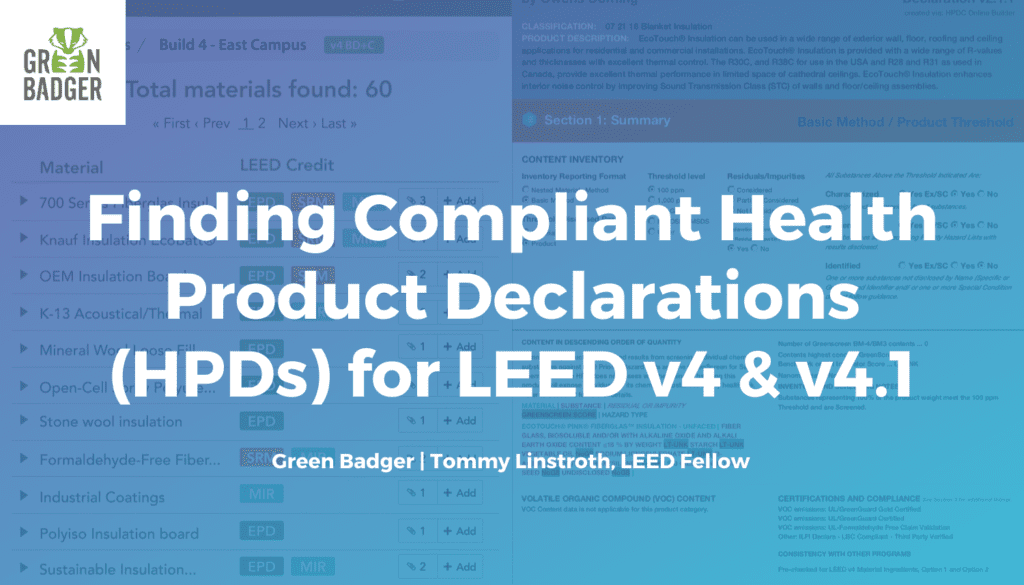Don’t feel like reading about LEED EPDs? Watch the video here instead, and don’t forget to subscribe to our YouTube channel.
Today, we’re going to take a look at what you need to know about Environmental Product Declarations (EPDs) to qualify for LEED v4 and LEED 4.1. Let’s start with the basics.
What is an Environmental Product Declaration or EPD?
Environmental product declarations are independently verified reports based on life-cycle assessment (LCA) studies. The LCA studies must have been conducted according to a set of common rules (“product category rules,” or PCRs) for each product category and then peer-reviewed. EPDs are managed and created by “program operators” — organizations that ensure that the EPDs meet the various requirements. In the U.S. you’ll see those from UL, SCS, ASTM or NSF, though there are a few others that are coming around. Check out this post for a breakdown of more environmental product declaration examples.
Broadly speaking, there are 3 main types of EPDs that we come across:
- Industry Wide
- Product Specific Type III, Internally Reviewed
- Product Specific Type III, Externally reviewed
LEED EPDs: What’s the difference between industry-wide EPDs and product-specific EPDs?
Industry-Wide EPDs
Industry-wide EPDs are generic for certain types of products.
LEED v4:
Doesn’t matter who the
manufacture is as long as they’re a
member of the association that
generated the EPD
½ a product contribution
LEED v4.1:
The manufacture must actually be
included or listed by name in the
EPD as a participant
1 full product
Industry wide EPDs are generic for certain product types of products such as Type X gypsum board or concrete. For LEED v4, it doesn’t really matter who the manufacture is as long as the are a member of the association that generated the EPD.
As you can see here, this EPD is from the US Gypsum Association, and anyone from North America who is a member can claim this for their product. Industry-wide EPDs are only worth a ½ a product contribution under v4.
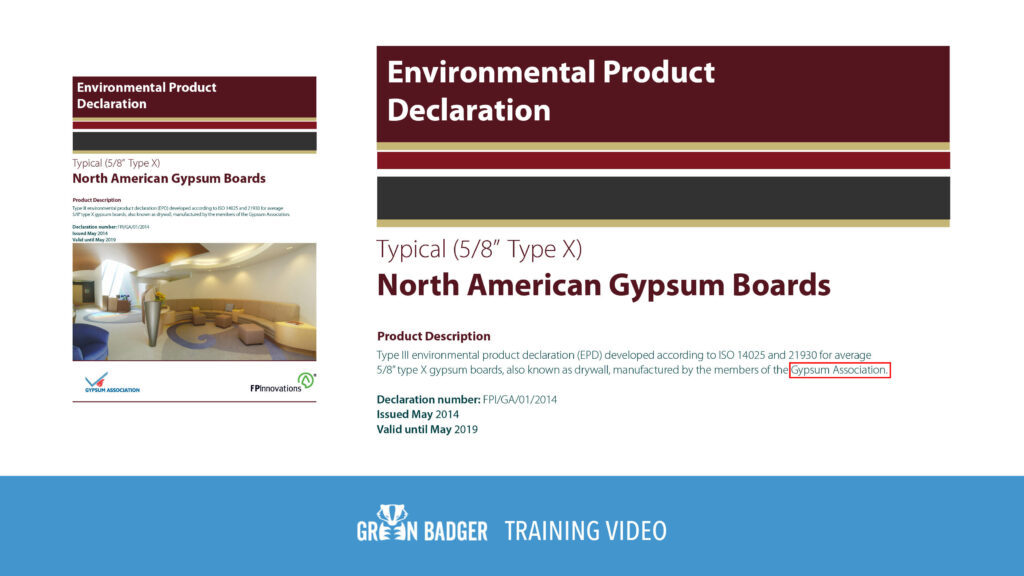
LEED v4.1 is more stringent. For LEED v4.1, the manufacture must actually be included or listed by name in the EPD as a participant. These industry-wide EPDs count as 1 full product under LEED v4.1.
You can see an example of that here:

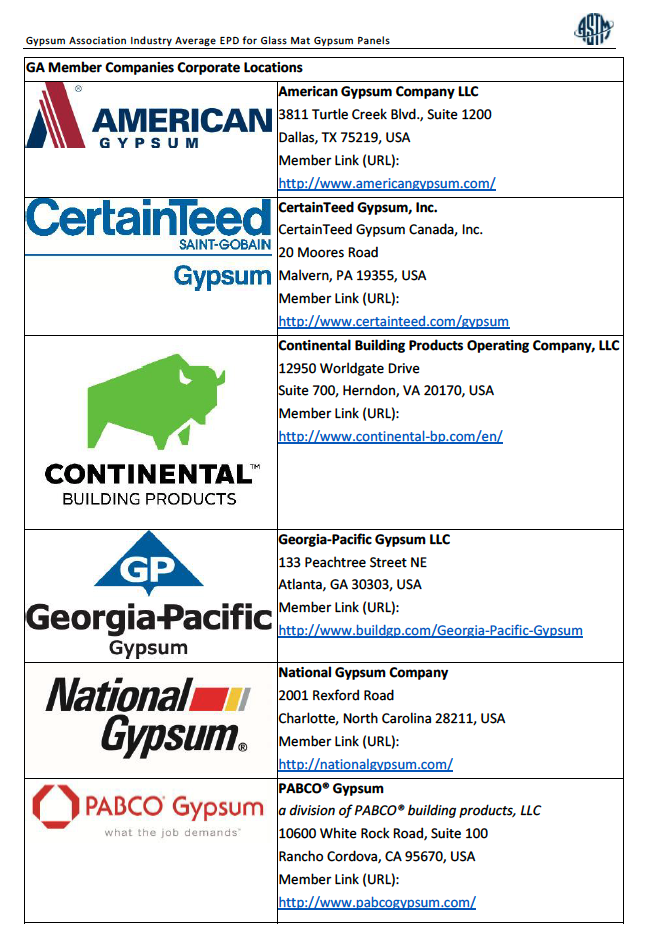
Type III Product Specific EPDs
Internally and Externally reviewed EPDs differ in whether a third party reviewed the information.
LEED v4:
internally reviewed = 0.75 products
externally reviewed = 1 product
LEED v4.1:
internally reviewed = 1 products
externally reviewed = 1.5 products
Type III Product Specific EPDs are for a very specific product from a defined manufacturer. You’ll see it pretty easily. This EPD is for Sherwin Williams PrepRite Block Filler. Nothing else, only this product:
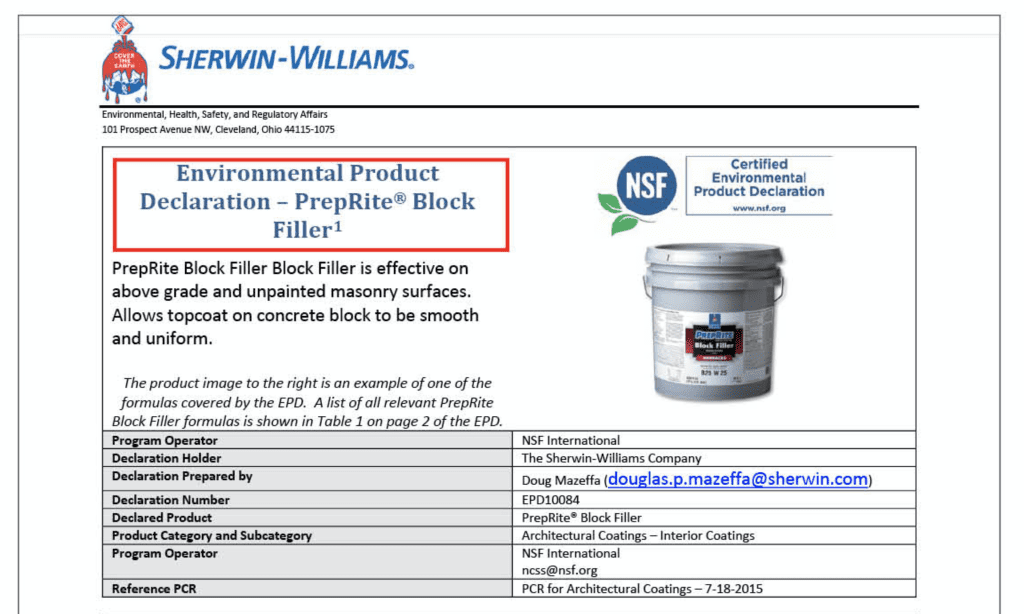
Internally vs. Externally Reviewed EPDs
Type III Internally and Externally Reviewed just differ in whether an outside third party reviewed the information. You’ll see it checked on an EPD pretty obviously, such as the case on this EPD, where the box specifically states Externally reviewed with a check mark.

For LEED v4, internally reviewed are worth 0.75 products and externally reviewed are worth 1 product. For LEED v4.1, it is 1 for internal and 1.5 products for external.
Lastly, EPDs need to demonstrate they conform to ISO 14025 and EN 15804 or ISO 21930. You don’t need to know what these ISO standards mean, but your EPD needs to say they were done in accordance with them. We’ve seen a whole lot out there that say they meet ISO 14025, but don’t reference EN 15804 or ISO 21930. These are getting comments from USGBC, though they’ve still been accepting them due to “independent research with the Program Operators” – almost all of them from UL.
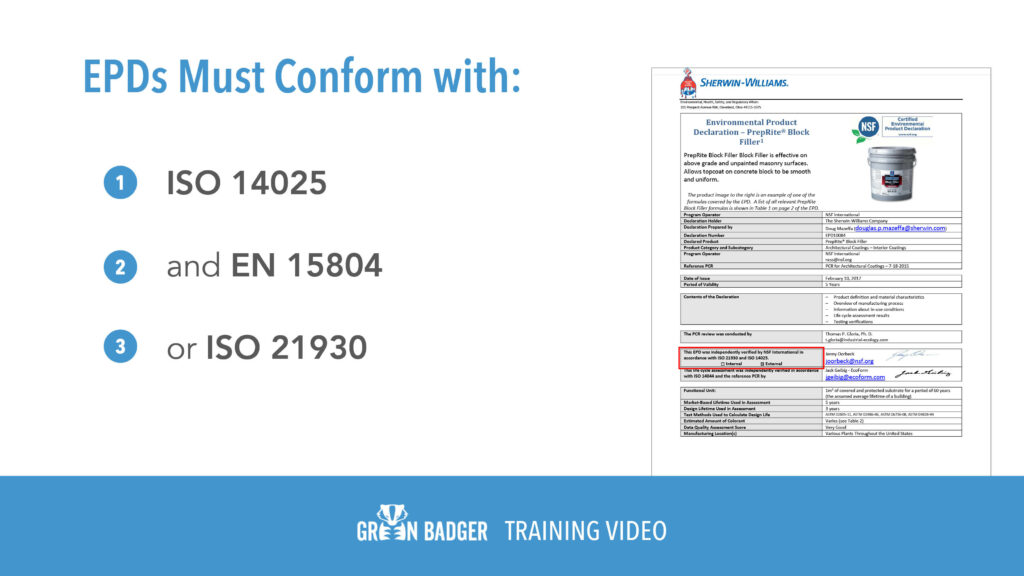
Badger Summary for finding LEED EPDs:
- Life Cycle Assessments (LCAs)
- An EPD is an independently verified report based on life-cycle assessment (LCA) studies.
- Product Category Rules (PCRs)
- The LCA studies must have been conducted according to a set of common rules (“product category rules,” or PCRs) for each product category and then peer-reviewed.
- Program Operators
- EPDs are managed and created by “program operators”—organizations that ensure that the EPDs meet the various requirement and you can always find that information on the first or second page.
- Product Specific vs. Industry-Wide
- You’ll need to note whether it is product specific, or industry-wide
- Internally vs. Externally Reviewed
- And note whether it was internally or externally reviewed.
- EPD must comply with ISO and EN standards
- Finally, you’ll want to double-check compliance with all ISO and EN standards.
Good luck and happy LEED EPD hunting! Check out this post for a breakdown of more environmental product declaration examples. Now that you’re an expert in finding LEED EPDs, check out our blog post for how to find compliant Health Product Declarations (HPDs) too. You can learn more about EPDs here.

